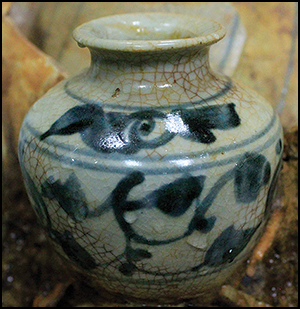Crossref Citations
This article has been cited by the following publications. This list is generated based on data provided by
Crossref.
Fischer, Christian
and
Hsieh, Ellen
2017.
Export Chinese blue-and-white porcelain: compositional analysis and sourcing using non-invasive portable XRF and reflectance spectroscopy.
Journal of Archaeological Science,
Vol. 80,
Issue. ,
p.
14.
Kneale, Casey
and
Brown, Steven D.
2018.
Uncharted forest: A technique for exploratory data analysis.
Talanta,
Vol. 189,
Issue. ,
p.
71.
Yang, Wenqing
Sun, Liguang
Yang, Zhongkang
Gao, Shu
Gao, Yuesong
Shao, Da
Mei, Yanjun
Zang, Jingjing
Wang, Yuhong
and
Xie, Zhouqing
2019.
Nan'ao, an archaeological site of Song dynasty destroyed by tsunami.
Chinese Science Bulletin,
Vol. 64,
Issue. 1,
p.
107.
Polkinghorne, Martin
Morton, Catherine Amy
Roberts, Amy
Popelka-Filcoff, Rachel S.
Sato, Yuni
Vuthy, Voeun
Thammapreechakorn, Pariwat
Stopic, Attila
Grave, Peter
Hein, Don
Vitou, Leng
and
Zerboni, Andrea
2019.
Consumption and exchange in Early Modern Cambodia: NAA of brown-glaze stoneware from Longvek, 15th–17th centuries.
PLOS ONE,
Vol. 14,
Issue. 5,
p.
e0216895.
Xu, Wenpeng
Yang, Zelin
Chen, Lifang
Cui, Jianfeng
Dussubieux, Laure
and
Wang, Wenjing
2021.
Compositional analysis below the production region level: A case study of porcelain production at Dehua, Fujian, China.
Journal of Archaeological Science,
Vol. 135,
Issue. ,
p.
105481.
He, Yan
Li, Weidong
Lu, Xiaoke
Xu, Changsong
Jin, Tao
and
Lin, Guocong
2021.
Chinese export porcelain in the middle Qing Dynasty: Study on the blue-and-white porcelains excavated from the “Xiaobaijiao I” shipwreck.
Journal of Archaeological Science: Reports,
Vol. 38,
Issue. ,
p.
103024.
Henderson, Julian
2022.
Politics of Production, Glass Provenance and Social Context on the Early Islamic Silk Roads.
Journal of Islamic Archaeology,
Vol. 8,
Issue. 2,
Hsieh, Ellen
Fischer, Christian
and
C. Orillaneda, Bobby
2023.
The atypical hues of the Santa Cruz blue-and-white cargo: non-invasive analysis of glaze defects and color variations in mid-Ming porcelain.
Heritage Science,
Vol. 11,
Issue. 1,
Tenorio, Dolores
Jimenez-Reyes, Melania
Terreros-Espinosa, Eladio
and
DE La Vega Doria, Socorro
2024.
A Study of Chinese and Japanese Porcelains from Archaeological Sites of Mexico City, Using INAA.
Semina: Ciências Exatas e Tecnológicas,
Vol. 45,
Issue. ,
p.
e50614.
Chen, Guishan
Li, Guanhua
Liu, Miaomiao
Luo, Kaiwei
Huang, Yingyu
Bao, Chunlei
and
Zhan, Changfa
2024.
Paleo-tropical cyclone activity over the last millennium inferred from shipwreck relics in the Xisha Islands, northern South China Sea.
Marine Geology,
Vol. 471,
Issue. ,
p.
107288.
